All 100 Famous Onsen are available
Onsen Hopping Pass: 100 Famous Onsen Free Pass
This ticket allows you to access any of the 100 Famous Onsen at the Seven Great Gunma Onsen Locations. (Limited to one visit per facility.)

Soaking in the onsen, stepping away from daily life, and being surrounded by rich nature heals both body and mind... Japan's onsen not only involve immersing oneself in the onsen as a blessing of nature but also include staying at traditional inns, tasting local cuisine, strolling through onsen towns dressed in yukata, and experiencing the hospitality of ryokan hosts and locals. It is a sanctuary of peace and comfort where one can fully appreciate the beauty and spirit unique to Japan.
Gunma Prefecture is one of Japan's premier onsen regions, home to approximately 100 onsen located in diverse natural settings like mountains, plateaus, and gorges. In addition to its seven major onsen—including Kusatsu Onsen, known for having the highest natural onsen output in Japan, as well as Ikaho, the 18 Minakami Onsen, Shima, Manza, Isobe, and Oigami—these areas are rich in history and culture.
For approximately one month during the beautiful winter season with snow-covered landscapes, an extensive onsen fair will be held to fully enjoy the onsen and culture that Gunma proudly offers. The Gunma Onsen Kaido connects the seven great onsen in the prefecture for a grand onsen fair. Explore the renowned onsen of Gunma, the onsen kingdom, using a web browser app on your smartphone. Immerse yourself in the baths, enjoy the local culture, and savor Japanese cuisine. With these unique moments of relaxation and comfort, why not take the opportunity to experience the essence of Japan and its natural beauty to the fullest?
*You will need to display the 100 Famous Onsen ticket and the bus ticket, both included in the Onsen Hopping Pass, on your smartphone screen.
※Information will be added



































We have selected 100 Famous Onsen from Gunma Prefecture’s seven major onsen areas, including traditional and exclusive facilities not usually accessible to the public. For example, Otaki-no-yu, Goza-no-yu, and the West Riverside open-air bath in Kusatsu Onsen, known as the Three Kusatsu Onsens; the grand open-air bath at ShimaYamaguchi-kan (Shima Onsen), an onsen ryokan by the clear Shima River; and the open-air bath at the Manza Prince Hotel, offering breathtaking views at an altitude of 1,800 meters (Manza Onsen). Altogether, nearly 100 facilities are featured.
From January 6 (Mon) to February 4 (Tue), 2025, the Onsen Hopping Pass (Free Pass) will be available, allowing unrestricted access to any of the 100 Famous Onsen, and the Onsen Hopping Pass (Select 10 / Select 5), which lets visitors choose and enjoy any onsen from the 100. Pass holders will also receive perks such as unlimited rides on the Onsen Hopping Bus connecting the onsen resorts, exclusive invitations to Premium Events held at the Seven Great Gunma Onsen Resorts, and commemorative gifts for completing a survey. From renowned onsen to hidden gems, use the onsen hopping pass on your smartphone to fully enjoy Gunma’s prized onsen.
*You will need to display the 100 Famous Onsen ticket and the bus ticket, both included in the Onsen Hopping Pass, on your smartphone screen.
This ticket allows you to access any of the 100 Famous Onsen at the Seven Great Gunma Onsen Locations. (Limited to one visit per facility.)
This ticket allows you to choose and use any 10 onsen from the 100 Famous Onsen at the Seven Great Gunma Onsen Resorts. (Limited to one visit per facility.)
This ticket allows you to choose and use any 5 onsen from the 100 Famous Onsen at the Seven Great Gunma Onsen Resorts. (Limited to one visit per facility.)



Premium events will be held across various locations, allowing you to experience the nature and culture of the Seven Great Gunma Onsen. Along with visiting the 100 Famous Onsen, enjoy the unique culture and cuisine of Gunma's onsen areas. Onsen Hopping Pass holders can access special pricing via the *web browser app.
(*Instructions for using the web browser app will be provided by email to those who purchase the Onsen Hopping Pass.)
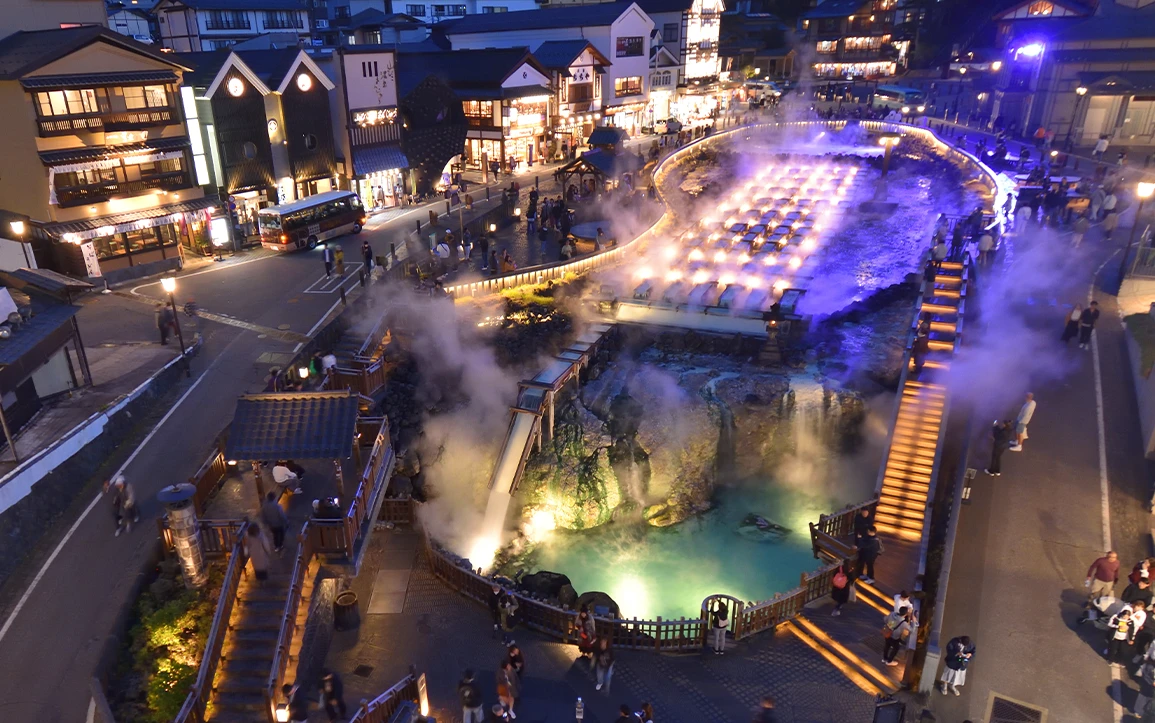
Kusatsu Onsen boasts the highest natural onsen output in Japan, with more than 32,300 liters per minute—equivalent to about 230,000 barrels per day. Kusatsu Onsen is renowned for its high acidity, with a pH value of 2.1 (Onsen source). It has strong antibacterial properties and is highly effective for skin beautification. It was once said to cure any ailment except a broken heart. Recently, Ura-Kusatsu, located just a 5-minute walk from the Onsen field, has been developed and offers new attractions.
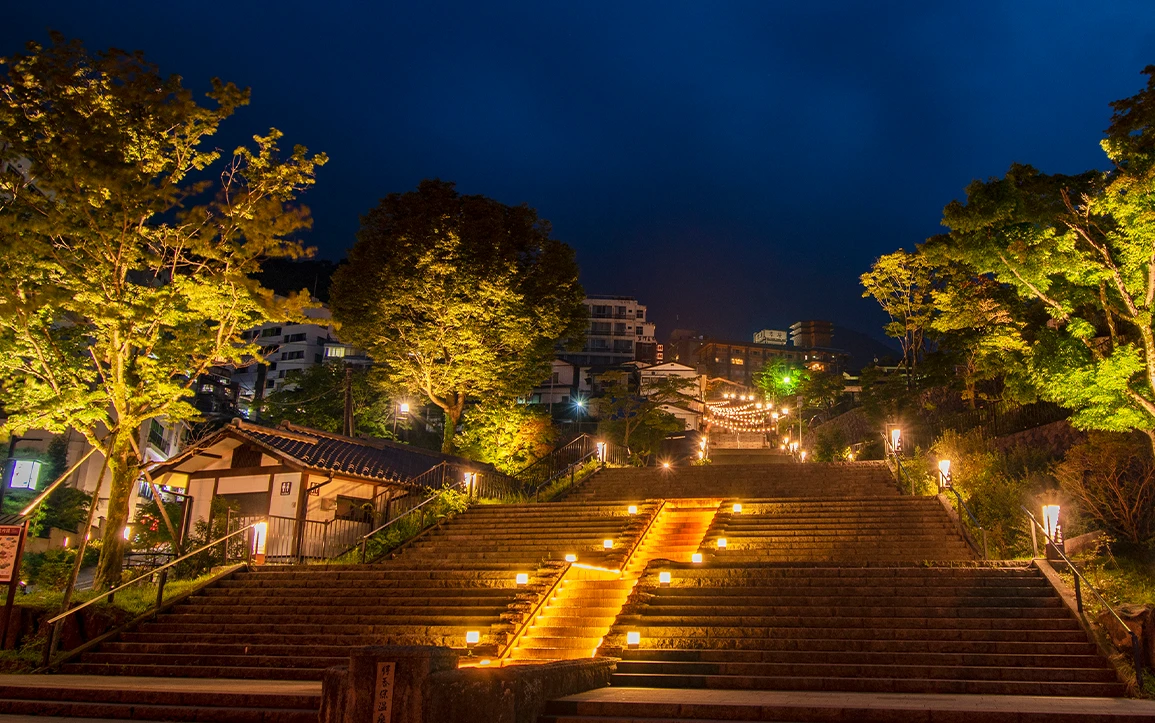
The historic town of Ikaho Onsen, mentioned in the Manyoshu and Kokinshu, is steeped in the charm of an old onsen town, centered around its 400-year-old stone step street. This 365-step path is lined with ryokan, souvenir shops, and restaurants, creating a lively atmosphere. The onsen offers two types of onsen sources: the "Golden Water," known for its warmth and promotion of blood circulation, particularly valued by women as the "Child-Blessing Water," and the colorless "Silver Water."

From hidden single-inn hot springs to bustling onsen towns, the Minakami Onsen area includes 9 onsens, the Sarugakyo Mikuni Onsen area has 5 onsens, and the Tsukiyono-Kamimoku Onsen area features 4 onsens, totaling 18. The onsens vary in types and benefits, offering luxurious experiences such as large open-air baths along mountain streams, panoramic baths overlooking lakes, and wooden tubs that are registered cultural properties. Minakami Town is also known as a hub for water sports and activities.
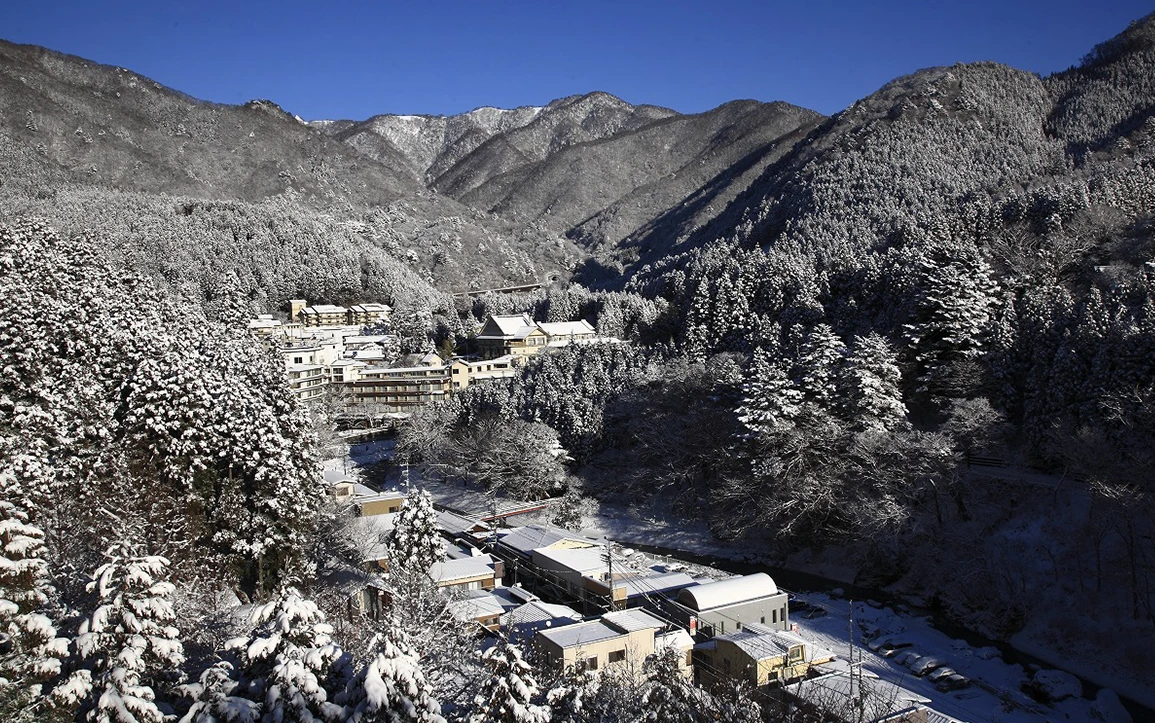
The Shima Onsen town stretches alongside the clear waters of the Shima River, connecting five areas: Hinatami, Yuzuriha, Arayu, Yamaguchi, and Onsen-guchi. The area retains a nostalgic Showa-era retro atmosphere with cafes and arcades. Historically, it flourished as a destination for onsen therapy and was designated the first National Recreation Onsen Area in 1954. Legend has it that the waters could "cure 40,000 illnesses," underscoring its long-standing reputation for healing and rejuvenation.
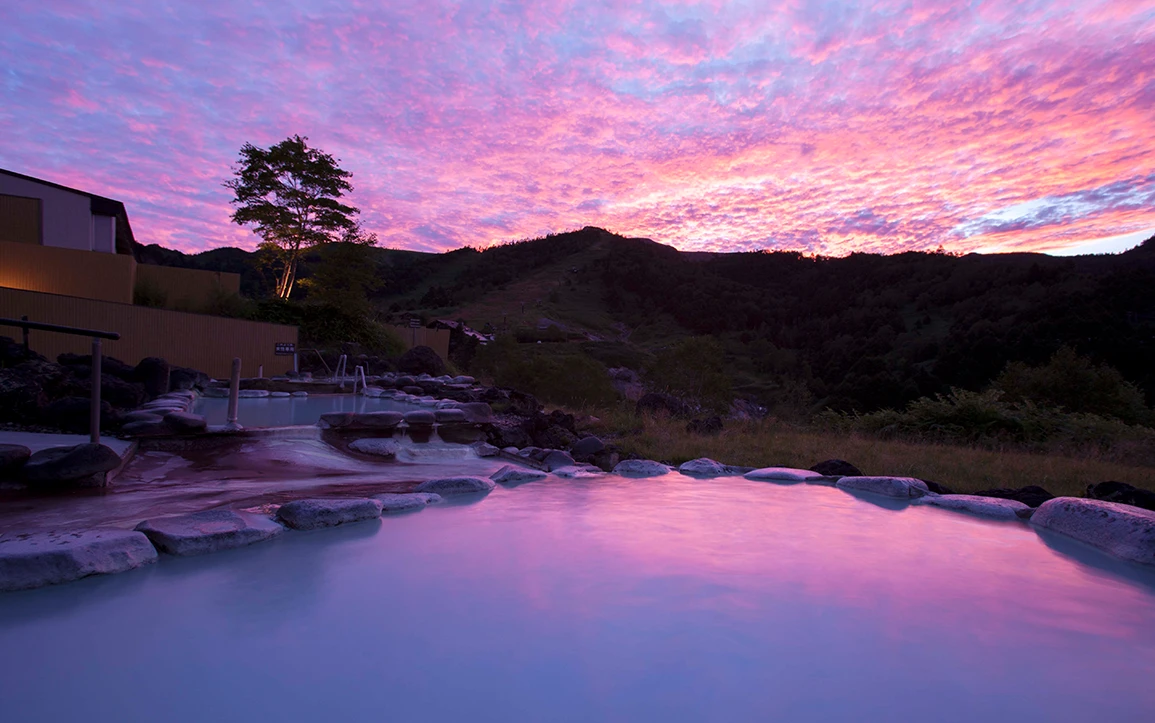
This onsen area is located at the foot of Mt. Kusatsu-Shirane at an altitude of approximately 1,800 meters in the northwest of Gunma Prefecture, bordering Nagano Prefecture. It is renowned for its abundant onsen output, producing 5.4 million liters daily, and its excellent water quality. The acidic sulfur springs, considered some of the most mineral-rich in Japan, have been known for centuries to be effective against various ailments. Visitors can enjoy the area year-round, with spring offering remaining snow and fresh greenery, summer providing a cool retreat, autumn showcasing vibrant foliage, and winter offering ski opportunities.
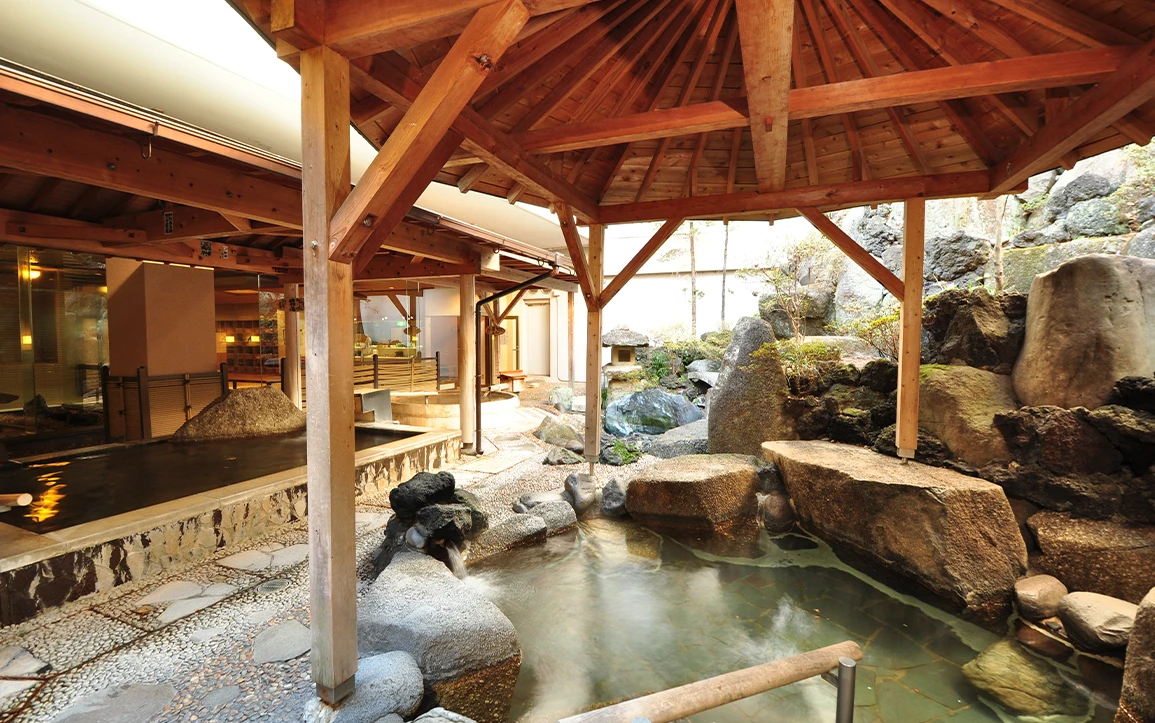
This small onsen area is nestled along the banks of the Usui River. Historically, it has been bustling with travelers and hot‐spring cure the Nakasendo Road and is widely recognized as the birthplace of the onsen symbol used on maps to indicate hot springs and mineral springs in Japan. Its clear spring water, rich in salt content, is known for deeply warming the body and leaving the skin smooth and hydrated. Be sure to try local specialties such as ayu fish dishes, fluffy tofu hot pot, and Isobe Senbei, crackers baked with mineral water.

This onsen is steeped in the legend of the god of Mt. Akagi healing an arrow wound and is still cherished today for its ability to heal and beautify the skin. The water is clear, soft, and mildly alkaline, gently cleansing dirt and dead skin cells like soap and leaving the skin feeling smooth. Each May, the Giant Serpent Festival is held to commemorate the legend of its origin and to honor the god of Mt. Akagi.